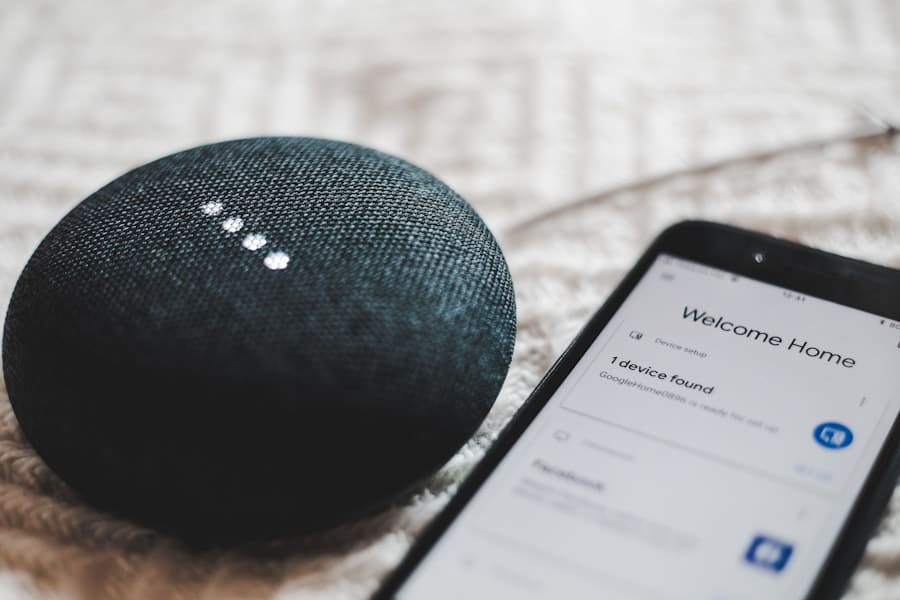The retail landscape is undergoing a seismic shift, driven by the advent of augmented connectivity facilitated by 5G technology. This next-generation wireless network promises to revolutionize how retailers interact with customers, manage inventory, and optimize supply chains. With its unparalleled speed, low latency, and ability to connect a multitude of devices simultaneously, 5G is set to enhance the retail experience in ways previously thought impossible.
As consumers increasingly demand seamless and personalized shopping experiences, retailers are compelled to adopt innovative technologies that can meet these expectations. Augmented connectivity is not merely an enhancement; it is becoming a fundamental requirement for survival in a highly competitive market. The integration of 5G into retail environments opens up a plethora of opportunities for businesses to engage with their customers more effectively.
From smart shelves that monitor inventory levels in real-time to immersive augmented reality (AR) experiences that allow customers to visualize products in their own spaces, the potential applications are vast. Retailers can leverage this technology to create a more interactive and engaging shopping experience, ultimately driving sales and customer loyalty. As we delve deeper into the impact of 5G on retail environments, it becomes clear that augmented connectivity is not just a trend; it is a transformative force reshaping the future of retail.
Key Takeaways
- 5G technology is revolutionizing retail environments by providing augmented connectivity, enabling faster and more reliable communication and data transfer.
- The impact of 5G on retail environments includes improved operational efficiency, enhanced customer experiences, and the ability to leverage emerging technologies such as augmented reality and virtual reality.
- Augmented connectivity with 5G is enhancing customer experience in retail by enabling personalized and interactive shopping experiences, seamless mobile payments, and real-time customer support.
- 5G is revolutionizing inventory management and supply chain in retail by enabling real-time tracking, monitoring, and optimization of inventory, as well as improving logistics and delivery processes.
- Augmented reality and virtual reality are playing a significant role in retail with 5G by enabling immersive and interactive shopping experiences, virtual product try-ons, and enhanced marketing and advertising campaigns.
The Impact of 5G on Retail Environments
The introduction of 5G technology into retail environments is poised to have a profound impact on various aspects of the industry. One of the most significant changes is the enhancement of in-store connectivity. With 5G’s high-speed data transfer capabilities, retailers can implement advanced technologies such as Internet of Things (IoT) devices that communicate in real-time.
For instance, smart mirrors equipped with AR can provide customers with virtual try-on experiences, allowing them to see how clothing or accessories would look without physically trying them on. This not only enhances customer engagement but also reduces the time spent in fitting rooms, streamlining the shopping process. Moreover, 5G enables retailers to gather and analyze vast amounts of data from connected devices, providing insights into customer behavior and preferences.
This data-driven approach allows retailers to tailor their offerings and marketing strategies more effectively. For example, by analyzing foot traffic patterns within a store, retailers can optimize product placement and promotional displays to maximize visibility and sales. The ability to make real-time adjustments based on data analytics empowers retailers to respond swiftly to changing consumer demands, ultimately enhancing their competitive edge in the market.
Enhancing Customer Experience with Augmented Connectivity

The customer experience is at the heart of retail success, and augmented connectivity through 5G significantly enhances this experience. One of the most compelling applications is the use of AR to create immersive shopping experiences. Retailers can develop applications that allow customers to visualize products in their own environments before making a purchase.
For instance, furniture retailers can offer AR apps that enable customers to see how a sofa would look in their living room, complete with accurate dimensions and color options. This not only helps customers make informed decisions but also reduces the likelihood of returns, benefiting both consumers and retailers. In addition to AR, 5G facilitates personalized shopping experiences through advanced customer engagement tools.
Retailers can utilize location-based services to send targeted promotions and recommendations directly to customers’ smartphones as they navigate through the store. For example, if a customer is near the cosmetics section, they might receive a notification about a special discount on skincare products. This level of personalization creates a more relevant shopping experience, fostering customer loyalty and encouraging repeat visits.
Furthermore, the integration of chatbots powered by artificial intelligence can provide instant assistance to customers, answering queries and guiding them through their shopping journey seamlessly.
Revolutionizing Inventory Management and Supply Chain with 5G
Inventory management and supply chain logistics are critical components of retail operations, and 5G technology is set to revolutionize these areas significantly. With its ability to connect numerous devices simultaneously and transmit data at lightning speed, 5G enables real-time inventory tracking and management. Retailers can implement smart shelves equipped with sensors that monitor stock levels continuously.
When inventory reaches a predetermined threshold, automated alerts can be sent to staff or suppliers for restocking, ensuring that popular items are always available for customers. Moreover, 5G enhances supply chain visibility by enabling real-time tracking of products from manufacturers to retail locations. This transparency allows retailers to monitor shipments closely, reducing delays and improving overall efficiency.
For instance, if a shipment is delayed due to unforeseen circumstances, retailers can quickly adjust their inventory strategies or communicate with customers about potential delays. Additionally, predictive analytics powered by AI can forecast demand trends based on historical data and current market conditions, allowing retailers to optimize their inventory levels proactively.
The Role of Augmented Reality and Virtual Reality in Retail with 5G
Augmented reality (AR) and virtual reality (VR) are two technologies that are gaining traction in the retail sector, particularly when combined with the capabilities of 5G. AR applications can enhance the shopping experience by overlaying digital information onto the physical world. For example, beauty retailers can use AR apps that allow customers to virtually try on makeup products before purchasing them.
This interactive experience not only engages customers but also helps them make more informed choices about their purchases. On the other hand, VR offers an entirely immersive shopping experience that can transport customers into virtual stores or showrooms. Retailers can create VR environments where customers can explore products in a simulated setting without leaving their homes.
For instance, automotive companies have begun using VR technology to allow potential buyers to take virtual test drives of vehicles or explore different models in detail. The combination of AR and VR with 5G connectivity ensures that these experiences are smooth and responsive, eliminating lag times that could detract from user engagement.
Leveraging Data Analytics and Artificial Intelligence in Retail with 5G

The integration of data analytics and artificial intelligence (AI) into retail operations is becoming increasingly vital as businesses seek to harness the power of information for strategic decision-making. With 5G’s high-speed connectivity, retailers can collect vast amounts of data from various sources—ranging from customer interactions to inventory levels—more efficiently than ever before. This data can be analyzed in real-time to gain insights into consumer behavior patterns, preferences, and trends.
For example, AI algorithms can analyze purchase histories and browsing behaviors to recommend products tailored specifically to individual customers. This level of personalization not only enhances the shopping experience but also drives sales by presenting customers with items they are more likely to purchase. Additionally, predictive analytics can help retailers anticipate future trends based on historical data, enabling them to stock up on popular items before demand surges.
Security and Privacy Considerations in Augmented Connectivity with 5G
As augmented connectivity through 5G transforms retail environments, security and privacy considerations become paramount. The increased number of connected devices raises concerns about data breaches and unauthorized access to sensitive customer information. Retailers must implement robust cybersecurity measures to protect their systems from potential threats.
This includes encrypting data transmissions, employing firewalls, and regularly updating software to address vulnerabilities. Moreover, privacy regulations such as the General Data Protection Regulation (GDPR) necessitate that retailers handle customer data responsibly. Transparency about how customer information is collected, stored, and used is essential for building trust with consumers.
Retailers should provide clear privacy policies and obtain explicit consent from customers before collecting personal data for marketing purposes or personalized experiences. By prioritizing security and privacy in their augmented connectivity strategies, retailers can foster customer confidence while reaping the benefits of advanced technologies.
The Future of Retail with Augmented Connectivity and 5G
The future of retail is undeniably intertwined with augmented connectivity powered by 5G technology. As retailers embrace this transformative force, they will unlock new opportunities for enhancing customer experiences, optimizing operations, and driving innovation across the industry. The integration of AR and VR will redefine how consumers interact with products, while data analytics and AI will empower businesses to make informed decisions based on real-time insights.
However, as this evolution unfolds, it is crucial for retailers to remain vigilant about security and privacy concerns associated with increased connectivity. By addressing these challenges proactively, businesses can build trust with their customers while fully leveraging the potential of augmented connectivity in retail environments. As we look ahead, it is clear that 5G will play a pivotal role in shaping the future of retail—creating a landscape where technology enhances every aspect of the shopping experience.
In a recent article discussing The Future of Augmented Connectivity in Retail Environments with 5G, it is important to consider the latest advancements in technology. One related article that delves into the features of the Samsung Galaxy Chromebook 2 could provide valuable insights into how cutting-edge devices are shaping the retail landscape. To learn more about this innovative device, check out this article.
FAQs
What is 5G and how does it differ from previous generations of wireless technology?
5G is the fifth generation of wireless technology, offering faster speeds, lower latency, and the ability to connect more devices simultaneously compared to previous generations like 4G.
How will 5G impact retail environments?
5G will enable retailers to provide enhanced augmented reality experiences, faster and more reliable inventory management, improved customer engagement through personalized experiences, and seamless mobile payments.
What are some potential benefits of augmented connectivity in retail environments with 5G?
Some potential benefits include improved customer experiences, increased operational efficiency, better inventory management, enhanced security and surveillance, and the ability to implement innovative technologies like virtual reality and artificial intelligence.
What are some challenges or concerns related to implementing 5G in retail environments?
Challenges and concerns may include the cost of infrastructure upgrades, ensuring data security and privacy, potential disruptions during the transition, and the need for skilled personnel to manage and maintain the new technology.
How will 5G impact the use of IoT devices in retail environments?
5G will enable a larger number of IoT devices to be connected simultaneously, leading to improved real-time data collection, better monitoring and control of devices, and the ability to implement more advanced IoT applications in retail environments.

